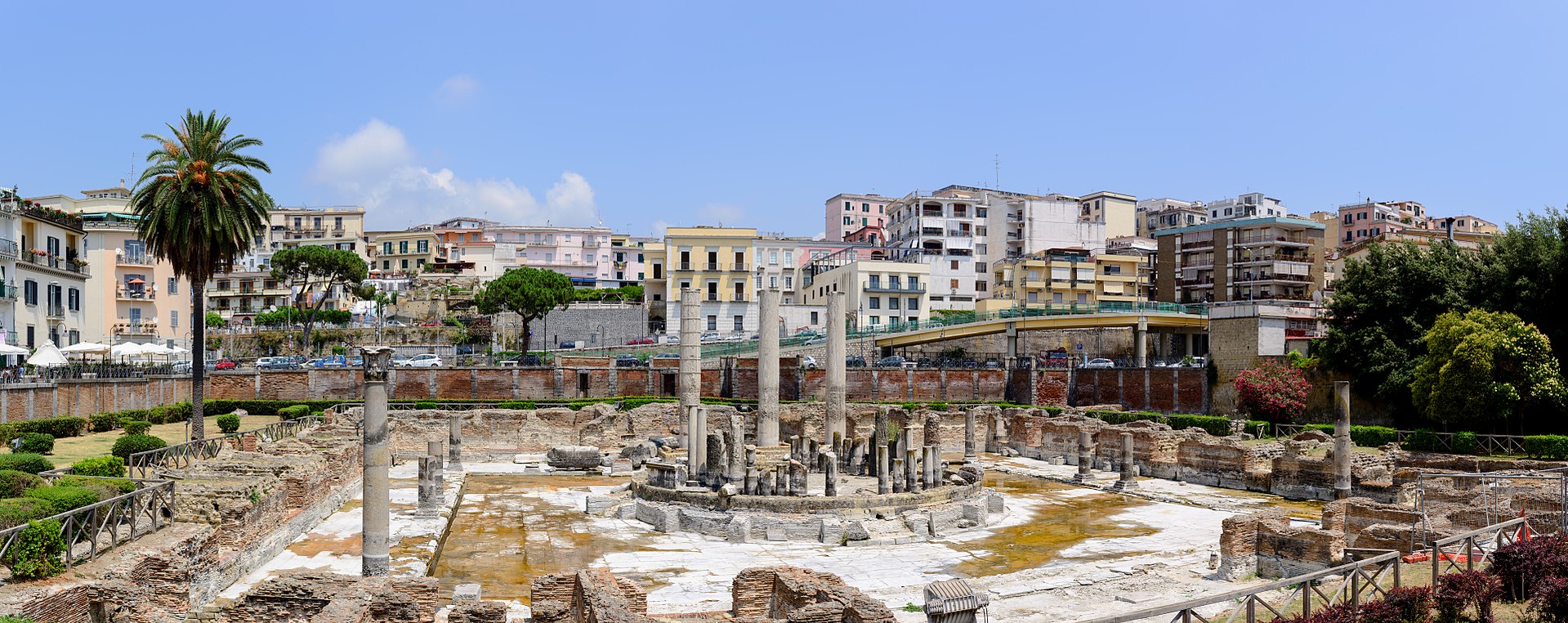Lying on the northwestern corner of the Bay of Naples, the city of Puteoli was a vital hub of ancient Rome. Greek colonists first established the city in 194 B.C., but it soon fell into Roman hands. Puteoli thrived under Roman rule, becoming the primary import point for grain ships from Alexandria in Egypt, protected by the main strength of the Roman navy, stationed nearby at Misenum. It was also the foremost export center for goods from Campania, such as blown glass, wrought iron pieces, mosaics, and marble.
Volcanic sand from around Puteoli formed the basis of long-lasting concrete, which allowed the Romans to build the great Pantheon. The structure is still the largest un-reinforced concrete dome standing in the world to this very day. The famous General Sulla built a villa in Puteoli, and much later, in the 4th century, Saint Proculus, became a martyr there. Yet perhaps the most intriguing story of the city’s history is that of Caligula’s great spectacle at Puteoli in 39 A.D.
Hope and Disappointment
The first seven months of Caligula’s short, four-year rule gave the people of Rome great hope for a bright future. Caligula appeared magnanimous and prudent. He fulfilled all the promises and bequests of Tiberius’s will, gave large monetary gifts to the citizens, published accounts of public money, which Tiberius had refused to do for some time, and produced an imperial budget. The people, senate, and army of Rome had all universally loved Caligula’s father, Germanicus, so they were eager to see the young man take power. He further endeared himself by his kindness and respect toward those of lower rank, interruption of unpopular taxes, and reverence towards the Roman Senate. Caligula even personally helped fight a fire that began in Rome, and gave generous compensation to all those who had suffered from it.
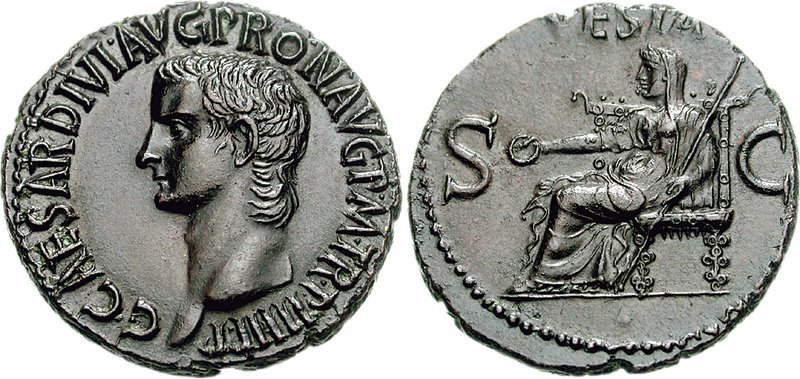
However, something happened that changed the young man’s imperial rule. Suetonius blames an illness that devastated Caligula in October of 37 A.D., his family and friends did not expect him to survive. Yet he did recover, though the illness may have damaged his brain. He became more flippant and flamboyant, and executed a few rivals. The change was slow at first, but apparently accelerated with the death of Drusilla, his favorite sister. Caligula was heartbroken, and may have suffered a nervous breakdown. Or perhaps Drusilla exerted a moralizing influence on her brother. In one well-known incident, he named his favorite horse, Incitatus, as consul, and built a beautiful marble stable for the equine senator. On another occasion he sent his soldiers to attack the sea. Less amusingly, he began to execute prominent citizens frequently, and seemed to revel in slow, brutal, torturous deaths.
Spectacle at Puteoli
Sometime in 39 A.D., Caligula planned a great spectacle from Puteoli to Baiae. Suetonius recorded that Thrasyllus, an astrologer, had said to the previous Emperor Tiberius, “as for Gaius [Caligula], he has no more chance of becoming emperor than of riding a horse dry-shod across the Gulf of Baiae.” Taking inspiration from Xerxes’ crossing of the Hellespont in 480 B.C., he planned a massive pontoon bridge spanning the approximately 2.5 mile bay. Caligula built a number of ships, and also gathered all merchant vessels available, apparently causing a famine in Rome since he interrupted their shipping schedules, and bridged the bay with them. When the ships were laid side by side, they were covered with planks and dirt to create a continuous stretch of land across the water. Yet it was not simply a bridge. It held rooms with lodgings and running potable water in places along its length.
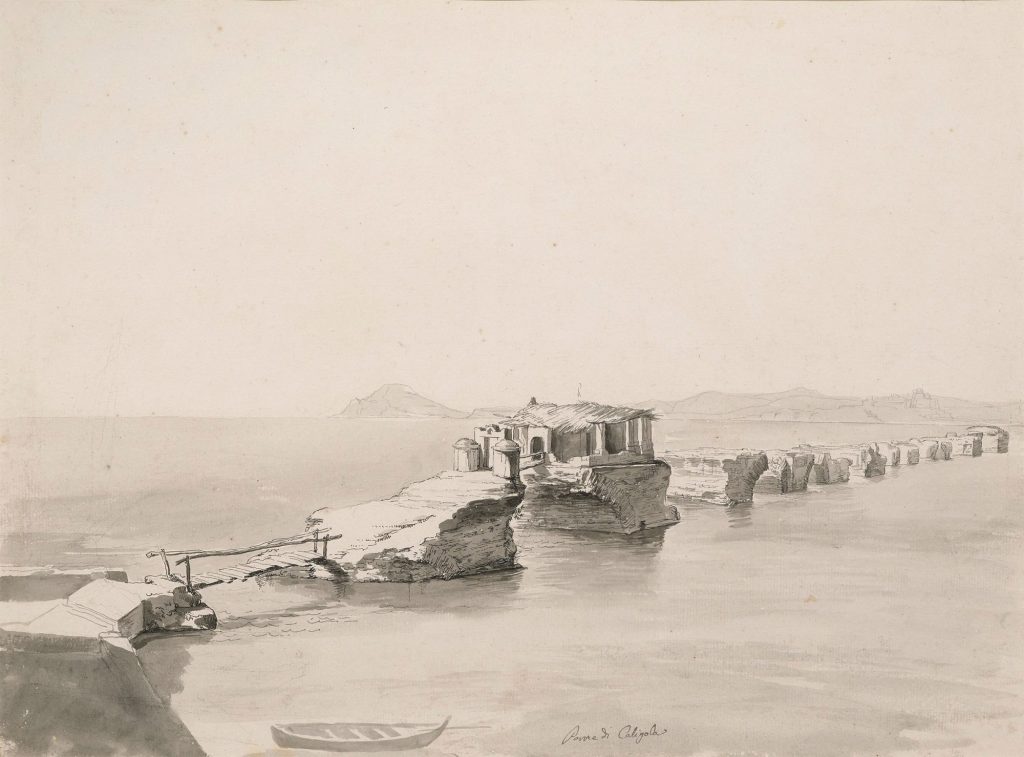
Caligula donned purple silk robes adorned with precious stones and gold, a sword, a shield, and a crown of oak leaves. Additionally, he wore what he claimed was the breastplate of Alexander the Great, that he had taken from the conqueror’s tomb when in Alexandria. Mounted upon a tall, proud war horse, the young emperor led the army in a wild dash across the bridge. They hurtled into Puteoli on the other side as if they were pursuing some enemy. They returned in a celebratory procession, Caligula’s own triumph, with the emperor riding in an ornate chariot. He even placed a Parthian boy, Darius, captive from a previous war, in a chariot just behind his as if he were a great prisoner. Behind Caligula rode the Praetorian Guard and his friends and flatterers, all in chariots.
A Step Too Far
At the center of the bridge, Caligula delivered a great speech commemorating his victory over the sea. He praised the bravery and enterprise of his soldiers, as if they had won some magnificent campaign, and paid them handsomely. A massive feast was prepared on the bridge, and drunken revels went deep into the night. Supposedly Caligula even drunkenly threw many of his fellow partiers into the sea. Later he took command of a ship and rammed it into other vessels around the bay, sinking several. Some men drowned, but most, though themselves hopelessly drunk, managed to swim safely to shore, for the sea was calm and tranquil. Even this pleased Caligula. “He declared that even Neptune was afraid of them; as for Darius and Xerxes, he made all manner of fun of them, claiming that he had bridged a far greater expanse of sea than they had done.”
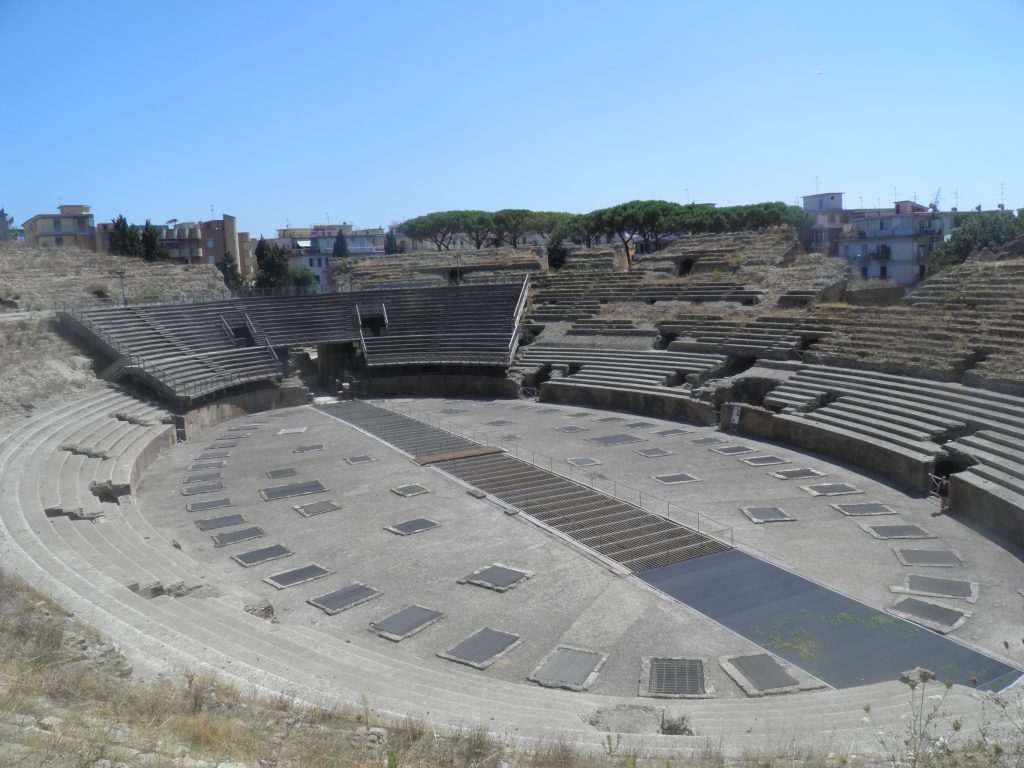
Caligula’s cruelty and extravagant spectacles understandably created enemies, and several attempts were made on his life, all failed. According to the historian Josephus, one particular incident incited the final plot that killed Emperor Caligula. One of the officers of the Praetorian Guard, a kind hearted man named Cassius Chaerea, had angered Caligula by refusing to perform executions and delaying taxes out of pity for the struggling Roman poor. In retaliation, Caligula forced Chaerea to cruelly torture a beautiful woman named Quintilia to compel her to testify against her lover, but she refused to do so. The horror of what he had been made to do pushed Chaerea over the edge, and he began a plot on the emperor’s life. Chaerea and the other conspirators attacked Caligula in an alleyway and stabbed him to death. They chose Claudius, Caligula’s uncle, to succeed him as emperor.
What to see there now:
A few minutes’ walk north of the train station, in the heart of modern Pozzuoli, is the Macellum of Pozzuoli. It was long believed to have been a temple of the Egyptian god Serapis. However, this structure was recently (and somewhat disappointingly) revealed to be nothing more than an ornate market building. It’s not the only ancient offering however. Just to the east is the subterranean structure of Puteoli’s Flavian amphitheatre. It is the third largest in Italy, and is still remarkably well preserved. Additionally, the partially ruined remains of the Temple of Neptune offer a tantalising hint of its former splendour.
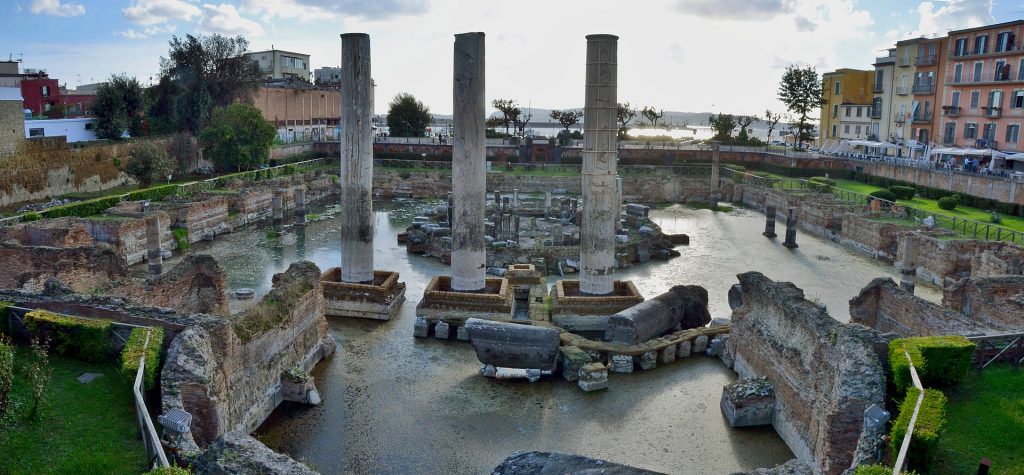
Puteoli on Timetravelrome app:
To find out more: Timetravelrome.
Sources: Suetonius, Gaius Caligula; Cassius Dio, Roman History; Josephus, Antiquities of the Jews
Header Photo: Ancient Roman market place (Macellum) and so-called Serapis temple, photo by Norbert Nagel licnsed under CC BY-SA 3.0
